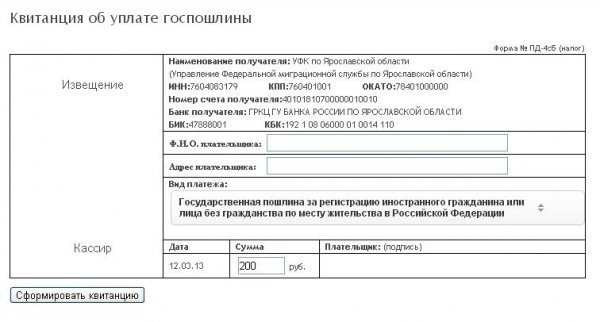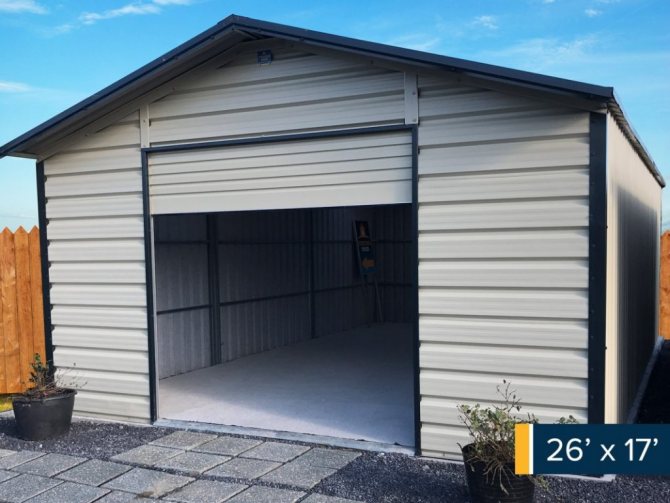Requirements for the content of a statement of claim for recognition of ownership rights Sample statement of claim for recognition of ownership rights What evidence is needed to file a claim for recognition of ownership rights in court State duty for recognition of ownership rights Jurisdiction for recognition of ownership rights
A claim for recognition of property rights must meet the requirements established by the civil and civil procedural legislation of the Russian Federation.
First of all, you need to decide on the grounds that will serve as your “support” in achieving a positive result. Section 2 of the first part of the Civil Code of the Russian Federation, as well as other federal laws and by-laws will help you with this.
This stage should be approached very carefully, since an incorrect basis for establishing ownership will lead to partial or complete refusal to satisfy the stated claims.
Ownership rights can be recognized for such types of property as:
- Land plot
- Building, house, apartment, garage
- Unfinished construction projects
- Unauthorized construction
- For a share in the property
- Car and other vehicles
This list of claims is the most common and is not exhaustive.
Lawyer for property rights in St. Petersburg. Tel.+7 Telephone consultation
Concept of property and public ownership
Property is the most important economic category. This concept means the appropriation of the means of production and the results of labor. Appropriation means the right to use and dispose of a piece of property at the discretion of the owner. Inseparable from the right to appropriate property in legal practice, the term alienation is considered, which means the loss of ownership of a particular subject of economic relations.
Owners can be not only individuals, but also enterprises, government agencies and even several states at the same time. An object of property is considered to be everything that can be appropriated - objects, real estate, natural resources, vehicles, money, etc.
There are several types of property:
- private property;
- collective ownership;
- state property;
- partnership ownership;
- public property, etc.
Private property is a form of ownership, use and disposal of an object in which all rights are concentrated in the hands of a private person - an individual or a legal entity.
Public property is called property in which a certain object (property) is owned by all members of society, a collective or a community, while having equal rights to own it and use it.
What documents will be required
Consideration of any legal dispute is impossible without documentary evidence. The plaintiff must clearly know what documents to recognize ownership of real estate he will need to defend his claims. These include:
- Applicant's passport;
- Documents of title – purchase and sale agreement, deed of gift, will, etc.;
- Documents for the object, if any - technical or cadastral passport;
- A certificate from the Unified State Register that the property is not registered in the cadastral register or an extract from the Unified State Register.
Depending on the circumstances of the case, other documents may be required, for example, archival certificates, information from local authorities, etc.
Special forms of ownership
The issue of classifying property by form is quite complex. There are two interrelated types of classification - by the form of ownership and by the form of assignment of the object. It is customary to distinguish three main forms of ownership:
- Individual form - here we are talking about personal property, the results of one’s own labor and the labor economy;
- Collective form - in this case we mean cooperatives, joint-stock companies, collective and rental enterprises, etc.;
- State form - this means national and municipal property.
Our country also provides for foreign and mixed forms of ownership. The latter presupposes the possibility of participation of Russian and foreign capital in any ratio and with different distribution of the share of participation.
Original ownership
A citizen can become the legal owner first of all by taking advantage of the initial right of ownership, which arises in the following situations:
- Creating a new object of property - this means that if you produce any object from your own materials, it, like the materials, is your property. For example, the construction of a building.
- Collecting publicly available things - an example of such things could be mushrooms, fruits, berries, brushwood, collected in the forest and as a result becoming your indisputable property.
- Profits and things obtained from the use of one's own property - an example is the birth of livestock. If a cow, for example, belongs to you, then the calves born by that cow also become part of your property.
- By way of acquisitive prescription , there is a law establishing that if a citizen uses certain property for a certain period of time, after a while it becomes his possession. Thus, for real estate the statute of limitations for possession is 15 years, while for movable property it is 5 years.
Settlement agreement
Issues relating to disputes over the recognition of property rights fall into the category of cases that require an attempt at pre-trial settlement. Before filing a claim in court, the injured party is asked to directly submit its demands to the defendant in writing. This quite often makes it possible to resolve a dispute under a preliminary agreement without resorting to court and significantly saving time, money and effort.
The law does not provide clear rules for drawing up a document with requirements for the defendant. It is only important to take into account that the plaintiff must set out his claims and demands in writing, supported by relevant regulatory legal acts of legislation confirming the validity of his appeal. If the parties to the dispute manage to reach a common opinion, a pre-trial agreement is drawn up and the case is resolved without opening a trial. If the issue of recognition of property rights cannot be resolved directly between the parties to the dispute, the injured party must go to court, be sure to provide a copy of the pre-trial appeal to the defendant.
Preparation of documents for filing a claim by a lawyer
When preparing a claim for recognition of property rights, lawyers and lawyers of MPC Vector are guided by the rules established by Art. 132 of the Code of Civil Procedure of the Russian Federation, the statement of claim to the court is supported by documents. They act as evidence of the information stated in the claim.
The list of documents varies depending on the situation. This may include:
- the plaintiff's general passport;
- technical passport of the premises;
- document of title – purchase and sale agreement, transfer of premises into the ownership of an individual, deed of gift, etc.;
- receipt of payment of state duty;
- act of acceptance and transfer of an object;
- power of attorney, if the interests of the applicant are represented by a trusted person;
- an extract from the personal account of the residential premises confirming the absence of debt;
- conclusions of the examinations carried out;
- other papers related to the case.
If there are no documents that could substantiate the claim to the court, then you can file a petition to obtain them. The text of the paper must indicate exactly what circumstances will be confirmed or refuted by the requested document. In response to the petition, the court will provide a request for evidence or obtain the necessary document on its own.
How to draw up a statement of claim to the court for recognition of ownership rights
A detailed list of information that should be indicated in the claim is described in Article 131 of the Code of Civil Procedure.
It is important to indicate:
- The name of the court in which the case will be heard
- Full name and passport details of the plaintiff and defendant,
- Indicate the plaintiff’s demands in the form “The defendant undertakes to transfer the housing property into the plaintiff’s possession...”
- Provide all the details and circumstances of the case (real estate price, area, articles of the Code of Civil Procedure under which the case is taking place, the period required for transfer),
- Describe all documents attached to the case,
- Describe evidence of ownership of property,
- Be sure to include the plaintiff's signature at the end.
Before sending a document, you need to check it with a lawyer.
List of documents for judicial intervention
In order to initiate legal proceedings for recognition of ownership rights, it is first necessary to correctly draw up a statement of claim. It is important to understand that the application will be considered only if there are serious grounds to believe that the plaintiff’s rights have been violated. To confirm this, you will have to attach the following package of documents to the claim:
- statement of claim and its copy;
- receipt of payment of state duty;
- a document confirming that the purchase of property took place, if ownership was obtained in this way;
- documents confirming the fact of donation;
- certificate of inheritance, if the property was received in this way;
- receipts, invoices and statements of expenses for operation, repairs, etc. in relation to the subject of the dispute;
- confirmation of tax payment;
- for real estate, BTI passport and privatization certificate, etc.

Receipt for payment of state duty
In order to count on a positive court decision, the plaintiff must collect the maximum amount of documentary evidence that his property rights have been violated.
Reasons
A claim for recognition of ownership rights is filed if there are grounds. These include the following circumstances:
- A citizen has built a property and has in his hands an act of putting the building into operation.
- A citizen can provide documents that are considered legal. For example, deed of gift, purchase and sale agreement, etc.
- Availability of other evidence - witness statements, paid receipts for the provision of housing and communal services, receipts for the purchase of building materials, technical passport, etc.
- Continuous ownership of property for 15 years or more. This is provided for in paragraph 1 of Art. 234 Civil Code of the Russian Federation.
- Construction of an unauthorized structure in respect of which recognition of ownership is required.
- Carrying out reconstruction of the facility in cases where permitting documentation is not available.
In addition, a claim can be filed to recognize the ownership of residential buildings that are part of a cottage community, or for premises in apartment buildings.
Recognition of property rights in court
If a citizen’s ownership of any property is disputed by third parties, it has been illegally taken by another person, or there are obstacles to exercising his right, the citizen has the right to file a lawsuit to force recognition of his own rights. Recognition of ownership of any property is regulated by the Civil Code of the Russian Federation and is defined as the right of a person to freely dispose of his property solely in his own interests.
Article 218 of the Civil Code of the Russian Federation is responsible for the recognition of property rights:
1. The right of ownership to a new thing manufactured or created by a person for himself in compliance with the law and other legal acts is acquired by this person. The right of ownership to fruits, products, income received as a result of the use of property is acquired on the grounds provided for in Article 136 of this Code.
2. The right of ownership to property that has an owner may be acquired by another person on the basis of a contract of sale, exchange, donation or other transaction for the alienation of this property.
In the event of the death of a citizen, the ownership of his property is inherited by other persons in accordance with a will or law. In case of reorganization of a legal entity, the ownership of the property belonging to it passes to legal entities - legal successors of the reorganized legal entity.
3. In the cases and in the manner provided for by this Code, a person may acquire ownership rights to property that does not have an owner, to property whose owner is unknown, or to property that the owner has abandoned or to which he has lost the right of ownership on other grounds, provided by law.
4. A member of a housing, housing-construction, dacha, garage or other consumer cooperative, other persons entitled to share savings who have fully paid their share contribution for an apartment, dacha, garage, or other premises provided to these persons by the cooperative, acquire the right of ownership to the specified property.

The difficulty of recognizing the right of ownership of property in court lies in the fact that theoretically such decisions are made quite often, but implementing them in practice can be quite difficult. To understand the registration procedure, it is necessary to separately consider the main directions of judicial practice in the field of recognizing the ownership right of the owner of the property:
- Recognition of ownership of a land plot . The vast majority of court cases in this area are related to the recognition of ownership of plots that were transferred into the possession of citizens before 1991 without proper documentation. In this case, the citizen has used this property for a long time, but cannot officially dispose of it and conduct transactions. When such a need arises, the owner should go to court and provide any evidence of his ownership of the property. Not only documentary evidence of the transfer of land, but also the testimony of neighbors or representatives of a dacha cooperative, etc. can be considered as strong evidence. Decisions in this case are usually made in favor of the plaintiff.
- Recognition of ownership of real estate . Very often in court you have to prove your right to use, own and dispose of real estate. You will have to provide all available documentary and witness evidence of the acquisition and maintenance of the house/apartment. Such cases most often arise during the joint purchase of housing or when purchasing unfinished real estate from an unscrupulous developer.
- Recognition of property rights by inheritance under a will . An heir can take ownership either by will or on legal grounds of kinship. Often the procedure requires judicial intervention, since the heirs cannot determine equal shares among themselves or consider the will invalid. In this case, recognition of ownership occurs in court.
- Recognition of ownership of ownerless property . This refers to real estate that does not have an owner-owner. Such real estate does not include unauthorized construction, land and other natural resources. Consequently, ownerless property is considered to be an apartment, a residential building, or a garage. To take possession of such real estate, you need to know for sure that the owner is absent, have documents confirming the right of ownership, as well as witnesses confirming your right to such property. Consult with an attorney before going to trial.

And:
Recognition of ownership rights to shared construction (according to DDU). The ownership right of a participant in shared construction is determined by Part 1 of Art. 16 of the Law of December 30, 2004 N 214-FZ.
1. The right of ownership of a participant in shared construction to a shared construction object after the transfer of the shared construction object to the participant in shared construction in accordance with Article 8 of this Federal Law is subject to state registration in the manner established by Federal Law of July 13, 2015 N 218-FZ “On State Registration of Real Estate” "
(Part 1 as amended by Federal Law dated July 3, 2016 N 304-FZ)
(see text in the previous edition)
2 - 4. Lost force as of January 1, 2021. — Federal Law of July 3, 2016 N 304-FZ.
(see text in the previous edition)
5. A participant in shared ownership, when the right of ownership to a shared construction object arises, simultaneously acquires a share in the right of ownership of the common property in an apartment building, which cannot be alienated or transferred separately from the right of ownership to the shared construction object. State registration of the emergence of ownership of a shared construction project is at the same time state registration of the inextricably linked right of common shared ownership of common property.
Here, the consumer is often faced with a situation involving the bankruptcy of the developer and other force majeure circumstances, when the house is not built, but he wants to return the money. In such cases, the following claim must be filed with the courts:
- Claim for recognition of ownership of a disputed property;
- A claim for recognition of the right of ownership to a share in the right of common shared ownership of an apartment building, corresponding to the object of shared construction - an apartment;
- Recognition of ownership of an unfinished construction project.
The decision of the arbitration or arbitration court will be considered fair.
In what cases is it impossible to recognize ownership of real estate?
The procedure for recognizing ownership of real estate requires the presentation of a significant amount of evidence, so its absence or incorrect execution often leads to refusal to satisfy the requirements for recognition of ownership. For example, going to court without any documents for real estate will not allow you to establish ownership of a transaction that was once completed. If ownership of an unauthorized structure is recognized, the claim will be denied if the land on which it is erected is not registered as ownership. In such situations, ownership of the land plot is first established, and then the building.
They will refuse to recognize the ownership of an apartment purchased under an equity participation agreement before the house is put into operation. In this case, the legislation proceeds from the fact that until there is an act of commissioning, the house is recognized as an object of unfinished construction and registration of rights is inappropriate. However, judicial practice in such cases is ambiguous and there are court decisions in which shareholders were recognized as the owners of unfinished construction projects. But these decisions concerned “frozen” objects.
Features for an apartment in a new building
Due to the fact that in our country the issue of purchasing their own housing is particularly acute, citizens often buy apartments in buildings that have not yet been put into operation. At first glance, buying real estate in a new building does not seem difficult at all, because you just need to draw up a purchase and sale agreement correctly. But in reality, getting ownership of an apartment can be much more difficult. The fact is that by the time of the pre-announced delivery date of the project, construction may not be completed, or the developer may refuse to transfer the apartment into the ownership of the shareholder. In this case, you should go to court to force recognition of ownership of the apartment.
If there are no difficulties in purchasing and registering an apartment, registration of the property should take place at the Federal Reserve Office (Federal Registration Service). If it is not possible to obtain ownership of an apartment by law, you should contact the local district or city court with a statement of claim. Litigation should also be initiated in cases where official registration is delayed for more than 2 years. In order for the court to consider your claim, it is advisable to attempt a pre-trial settlement. This process involves putting your grievances and demands in writing and submitting them to the defendant. If the issue cannot be resolved without a trial, a copy of this document should be attached to the statement of claim. Also, along with the claim, all documents confirming ownership of the apartment should be submitted to the court.

An example from judicial practice
After the new building was put into operation, all owners of apartments in it began the procedure for official registration of real estate. However, the local administration refused to assign a postal code to the built house, which impedes the registration procedure. The developer himself recommended that the owners file a class action lawsuit to recognize their ownership rights to the apartments. Having attached the entire package of necessary documents, the plaintiffs’ demands were satisfied, and they assumed rights under the court’s decision. The owners did not have to additionally contact the Federal Reserve System to obtain the appropriate certificate, since the court decision has legal force.
Why you should contact a lawyer for help
Issues of ownership of real estate are subject to detailed regulation, but the abundance of regulations often makes it impossible to independently protect rights. A competent lawyer in such a situation will carefully analyze the available documents and all the circumstances of the case. After this, he will clearly determine how to recognize ownership of real estate in this particular situation. Such assistance allows you to quickly resolve the issue in a positive way with minimal financial and emotional costs.
With respect to you and your business,
legal
Features for inheritance
In accordance with the law, the heir must enter into the right of inheritance within 6 months from the date of death of the testator. That. The limitation period is six months from the date of death of the testator. To enter into the right of inheritance, a citizen must submit a corresponding application to the notary's office, attaching to it the will of the deceased, if any, or a list of documents confirming the relationship with the testator. If for any reason the heir does not exercise his right within 6 months or a dispute arises between the heirs regarding the division of their shares, recognition of ownership of the inherited property can be done through the court.
Documents confirming relationship:
- Certificates issued by competent authorities upon request. For example, a certificate from the registry office;
- Entries in passports. For example, a record of children made in the parents’ passports;
- Extracts from information stored in archives with relevant content. Some archival documents contain information about the family ties of several individuals;
- Certificates issued by enterprises and organizations that have data on the presence of family ties;
- Certificates and other documents.
To begin legal proceedings in the case, the heir must file a claim in court and attach the maximum amount of documentary evidence of the fact of violation of his rights. In this case, the defendants can be any persons who violate the plaintiff’s rights to inheritance - other heirs, municipal organizations, government bodies, etc. The claim is filed at the place where the inheritance was opened. If during the trial the plaintiff manages to prove that he did not enter into inheritance rights due to ignorance of the death of the testator, illness or long absence from the country, city, or as a result of the criminal intentions of other heirs, his rights will be restored in court.
An example from judicial practice
Citizen R. died after long-term treatment for cancer. During his lifetime, he drew up a will, in which he indicated his son from his first marriage, living abroad, as the only heir. His second wife hid the fact of his father’s death from her son for six months, citing in telephone conversations his serious condition and inability to speak. As a result, the period for entering into inheritance under the will expired, and the spouse filed an application to accept the inheritance as a first-degree heir. A month later, the son of the deceased arrived and, having learned about his father’s death, went to the notary’s office to search for the will. With this document, he filed a lawsuit, providing testimony and documentary evidence of his absence from the country and ignorance of his father’s death. The court took into account the plaintiff's compelling circumstances and annulled the wife's rights to inheritance. Thus, the son was able, by a court decision, to recognize his rights to the property inherited under the will.
Features for living space
The owner of the property always has priority for the right to use and dispose of residential premises. However, according to the law, members of his family, heirs, as well as persons with whom this fact was certified under a real estate lease agreement can also live in this premises. There are often cases when a citizen is deprived of his legal right to use premises. There are many examples of such situations. For example, after a divorce, the ex-husband legally seeks to evict his wife and children, or adult children sell the apartment of their elderly parents, leaving them homeless. In this case, the injured party can recognize their right to use the premises through the court.
As with any other dispute, in this case you should file a claim and pay the state fee. Next, to achieve this goal, you should collect as much documentary and witness evidence as possible about the legality of using the residential premises. Documents establishing a close relationship with the owner, receipts for payment of utilities, a real estate lease agreement, etc. can be provided as evidence.
An example from judicial practice
Citizen B. went to court to confirm her right to use the residential premises (private house) in which she lived with her common-law spouse for 25 years. They built this house together, which was confirmed by numerous witnesses. The court recognized the rights of the plaintiff and satisfied her demands. However, after some time, the children of the deceased from his first marriage claimed their rights to inherit real estate. As a result of the repeated court hearing, the common-law spouse lost her rights to use residential premises and was forced to move out of the house.
The procedure for recognizing the right of use for unauthorized construction
Often, persons who have erected an unauthorized structure on a certain plot of land without first obtaining permits or in violation of construction techniques apply to the court with a demand to recognize the right of ownership. In this case, the court will be guided by Article 222 of the Civil Code of the Russian Federation. This legal act states that, first of all, ownership of the building will be granted directly to the owner of the land plot on which the new property is located.

Land plot
If you use the land under lease, sublease, or on the basis of gratuitous temporary possession, in order to legally go to court, you will first have to buy the land from a private owner or from the state. The court should also provide evidence that the new property was built at your expense, does not belong to third parties and was built taking into account sanitary and epidemiological requirements and safety standards.
Recognition of property rights is carried out in court, which requires the mandatory involvement of an experienced lawyer.
What needs to be proven in court
During the trial process, three aspects will need to be proven:
- Circumstances that became the basis for the emergence of property rights. Official documents are used as evidence. For example, an approved privatization plan, constituent agreement, etc.
- The actual ownership of a property to which another person has title. Evidence may include witness statements, utility bills, etc.
- Inability to register property rights in the manner prescribed by law. For example, if serious inconsistencies are identified in the documents that can only be eliminated through legal action.
Depending on the situation and characteristics of the object, proof of other nuances of the case may be required. Various features of cases on recognition of ownership of real estate are considered in Resolution of the Plenums of the Supreme Court of the Russian Federation and the Supreme Arbitration Court of the Russian Federation No. 10/22 of April 29, 2010.
State duty amount
For different types of real estate, the amount of state duty is different:
- For an apartment on the secondary and primary market (in a new building), as well as for a house, the state duty will be 2,000 rubles,
- For a land plot for an apartment building or building - 100 rubles,
- For land for agriculture (garden plot) - 50 rubles,
- For a plot of land for building a house - 350 rubles,
- For an unfinished construction project (unfinished real estate property) - 100 rubles,
- For a non-residential property - 2,000 rubles,
- For a garage or garage box - 500 rubles.









